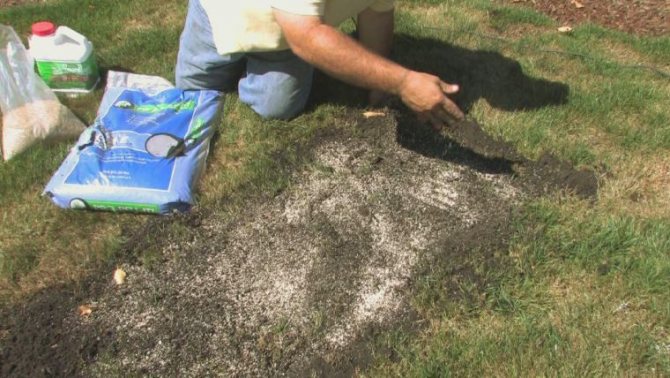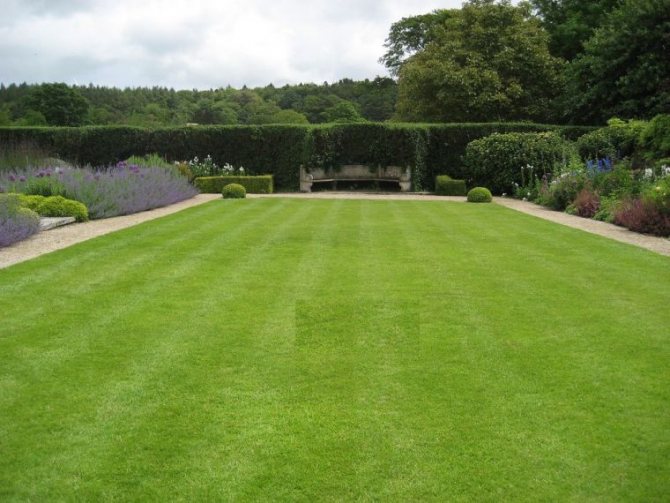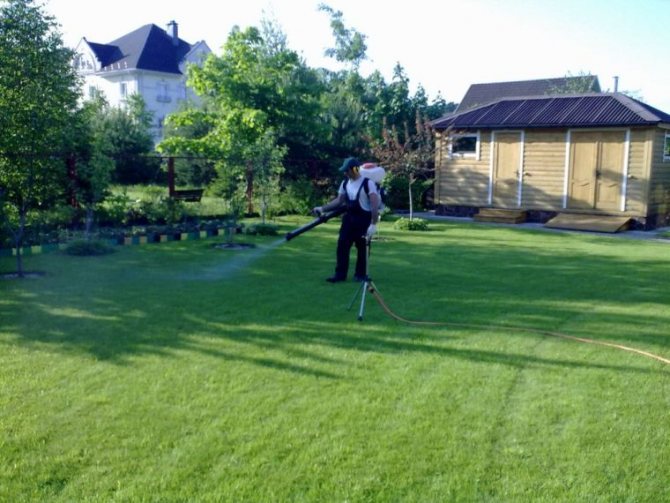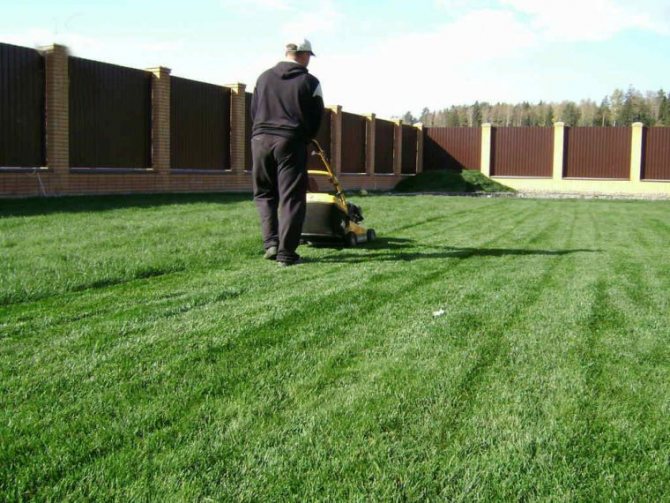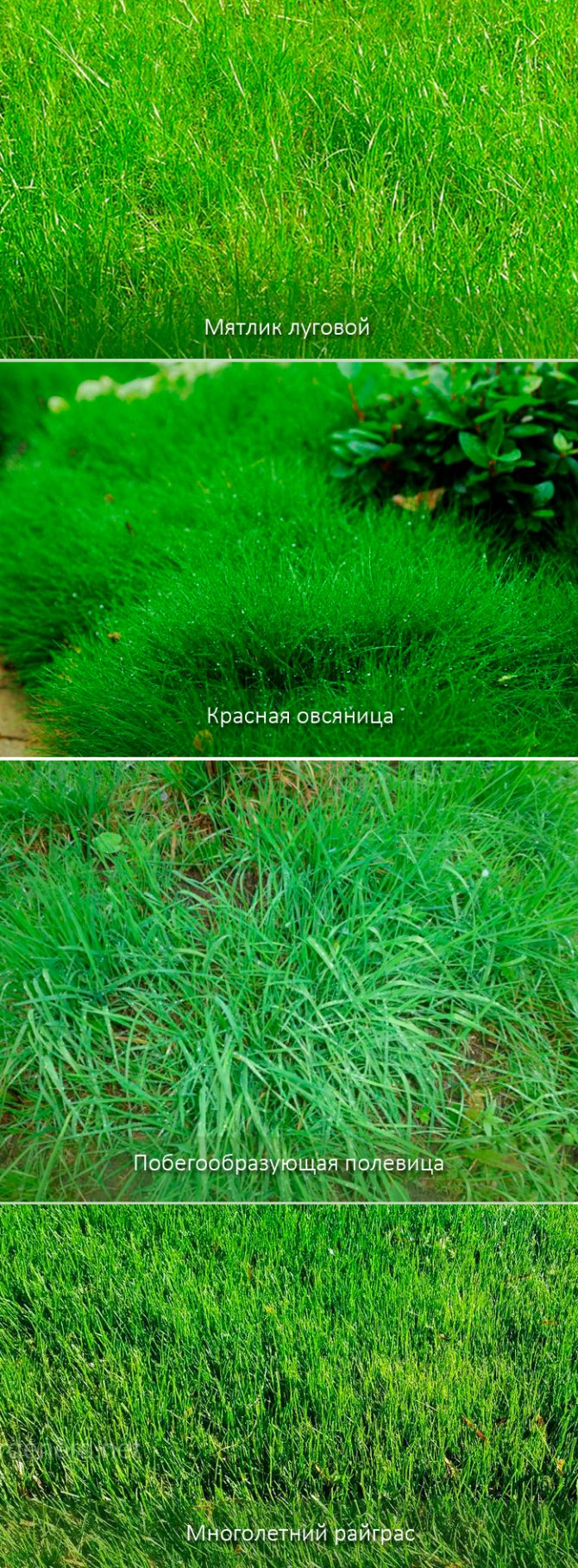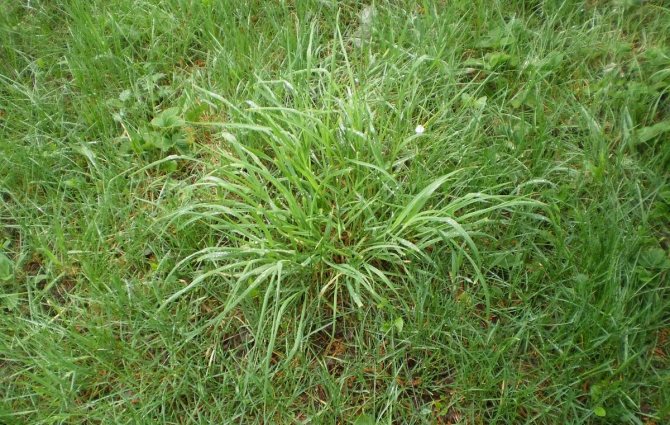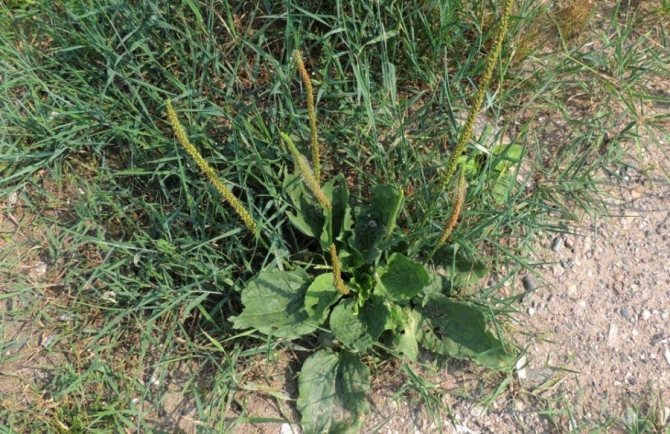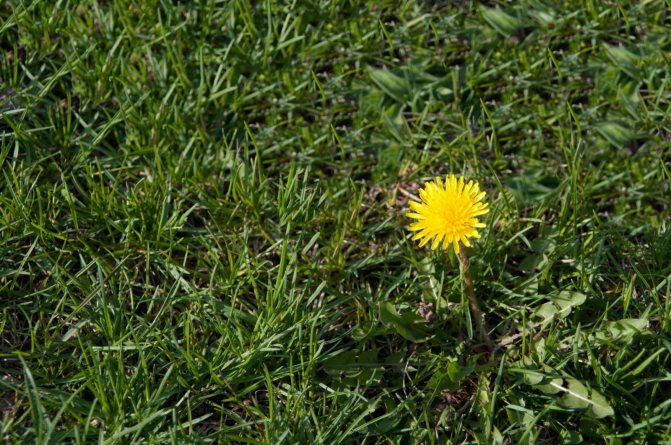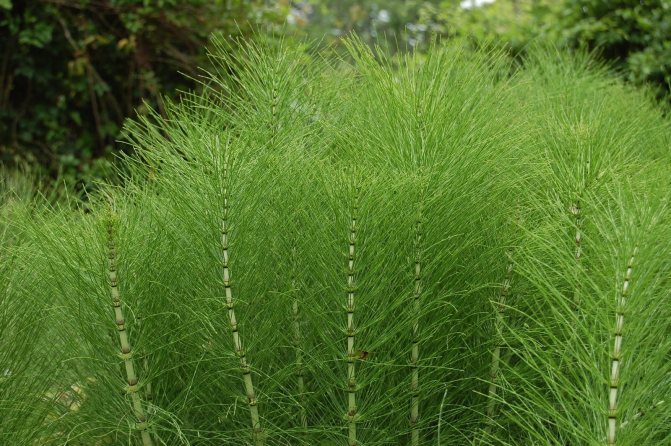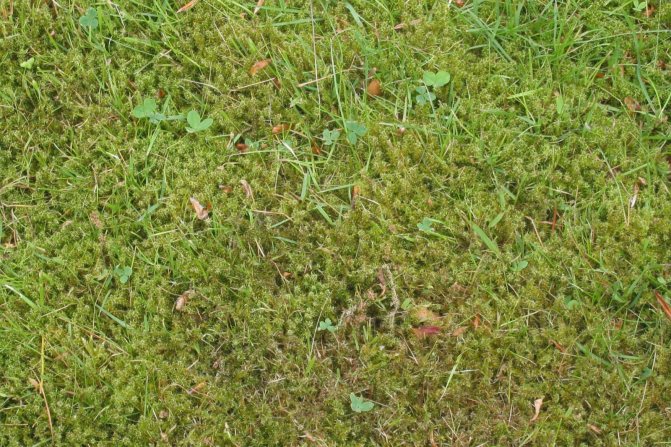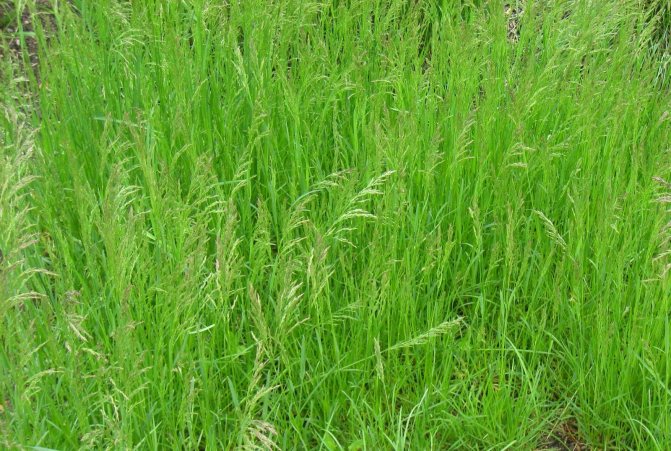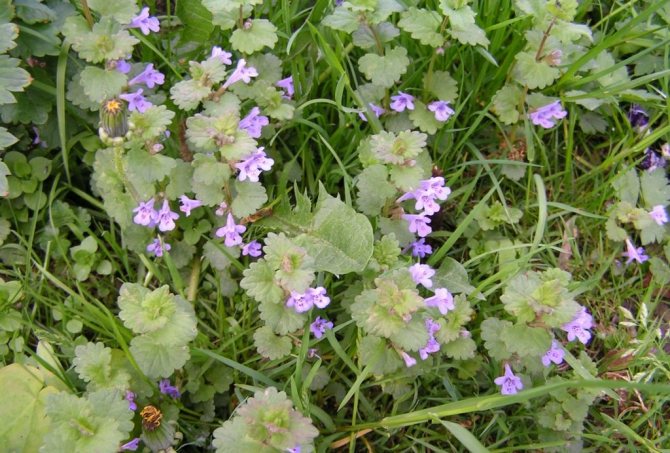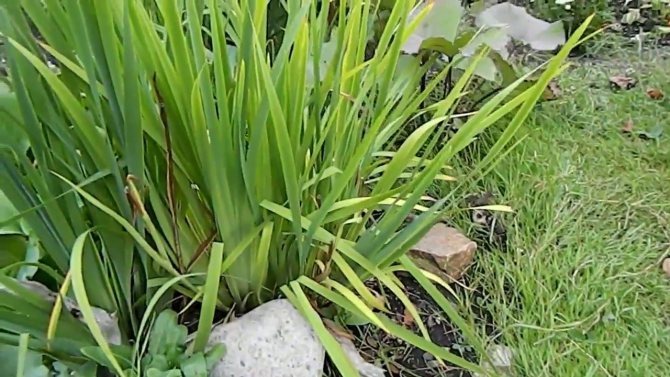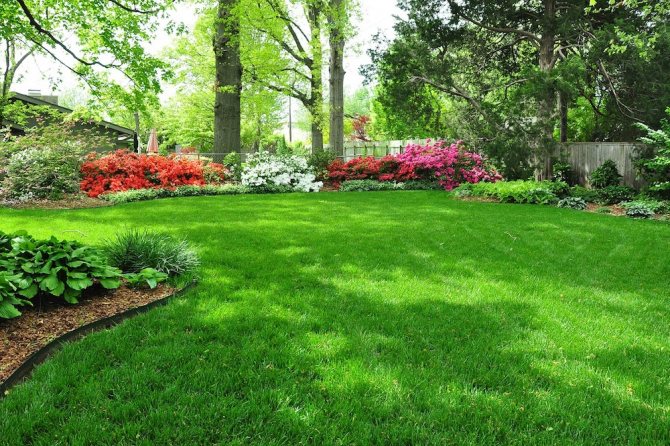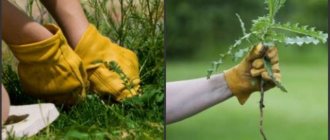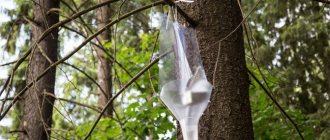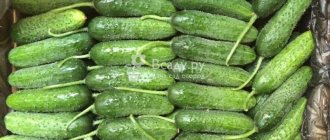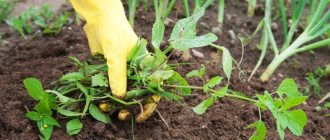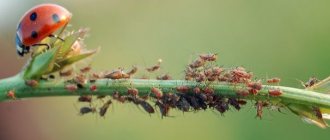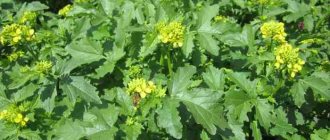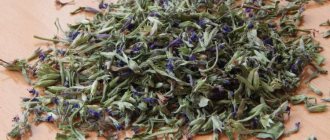Planting a lawn is half the battle. Mowing and watering it regularly isn't everything. Wild weeds, which are adapted to survive in any, even extreme conditions, bring a lot of headaches in care. Preliminary thorough weeding and processing of the site does not guarantee that after a while they will not begin to break through the sod, sow with seeds brought by the wind, and will not spoil the entire appearance of the green lawn. How to deal with weeds and how to get rid of them as efficiently as possible? Choose a seed mixture that can stand up for itself!
How to maintain a weed-free lawn
A lawn that is properly cared for is able to resist weeds, “fight off enemies”. If the lawn is dense, good, weed seeds from unkempt neighboring plots practically do not take root on it. Therefore, our experts in their comments constantly emphasize: herbicides are not a panacea, first you need to establish nutrition, mowing and watering, and only then resort to the help of the chemical industry.
Sodmaster Consultant FORUMHOUSE, Moscow.
Killing weeds is not a problem, it is a problem for a lawn to grow in a vacant place ...
A comprehensive approach to lawn weed control should be as follows:
- we always feed the lawn in a timely manner (by the way, nitrogen fertilizers perfectly resist such a weed as clover);
- we always water the lawn on time to prevent drought-resistant weeds from taking over the non-drought-resistant lawn grass;
- from spring to autumn, we do not skip lawn mowing, because by overgrowing the lawn and then cutting it almost bald, we greatly weaken it.
Let's take an example.
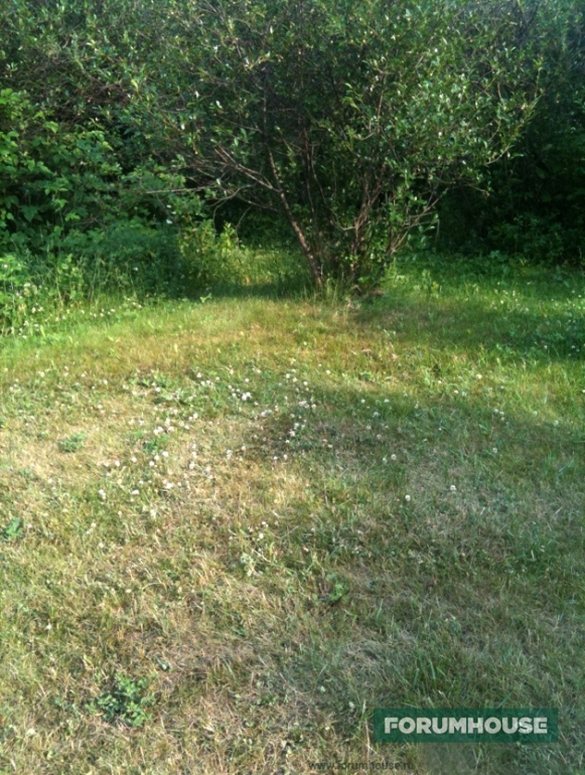
Here is a set of specific measures, which the FORUMHOUSE expert Lawnmower has advised to Rosita, a member of our portal, to fight her "unfortunate lawn":
- Drizzle, even pour. In the center of the lawn, in the sun, where the grass is clearly dry, give 20-25 liters per sq. m, and less in the shade around the edges.
- Wait a day or two and feed with half the dose of complex fertilizer. If there is no complex fertilizer, you can simply feed it with nitrogen alone (250 g / weaving per hour) and water a little more.
- Wait a couple more days and mow; for this particular case, the expert recommends setting the mower to 6 cm.
Lawnmower Agronom, FORUMHOUSE member
Then the carousel will turn: mow more often, but do not lower the height until everything is pulled up to the same height. Watering a week later, but abundantly, two weeks after the first feeding the second (complex (3-1-2), 250 g / weaving in nitrogen).
Another example: for alexey_og the next year after sowing, the lawn was terrifying, it seemed that the lawn consisted of only weeds, that only weeds were growing on the lawn. This lawn was reanimated by weekly mowing, regular watering and feeding. The result of this work was not long in coming!
alexey_og FORUMHOUSE member
In just 1.5 months, my bluegrass lawn begins to put pressure on the weed, and judging by the mood of meadow bluegrass development, it will gradually crush it. Hopefully the lawn will be great by next year.
Bluegrass develops slowly, at the first stage lagging far behind the rapidly growing weed.But with proper care, the balance of power will certainly change. Don't rush with herbicides!
Choosing a lawn grass that displaces weeds
When you start selecting the seed, it is important to take into account its characteristics. First, pay attention to how tall the plant will grow. Since quality lawn grass is short. This will facilitate further care. It must be resistant to trampling, tolerate drought well, and have a dense root system. It is the abundant rhizomes that are able to fill most of the soil surface and create dense plexuses. Thanks to this cover, weeds do not have the opportunity to germinate.
Important! You can plant grass from the spring to the fall. There are no time limits for sowing, however, it is better to choose dry, calm weather.
To get rid of weeds on the site, it is recommended to plant the following plants:
- Polevitsa... This herb is rather short and is characterized by the ability to grow quickly, which contributes to the formation of a thick root layer. The plant is considered unpretentious to the composition of the soil, but it is recommended to plant it in lighted areas. Water should be abundant for 1 year, and cut about 4 times per season.


- Ryegrass... This perennial is preferably planted in warm climates. Thanks to this material, the lawn can stand green until November. The plant is characterized by a high degree of resistance to trampling and is practically not susceptible to disease. However, this plant does not survive the winter well and may freeze out completely at this time of the year.
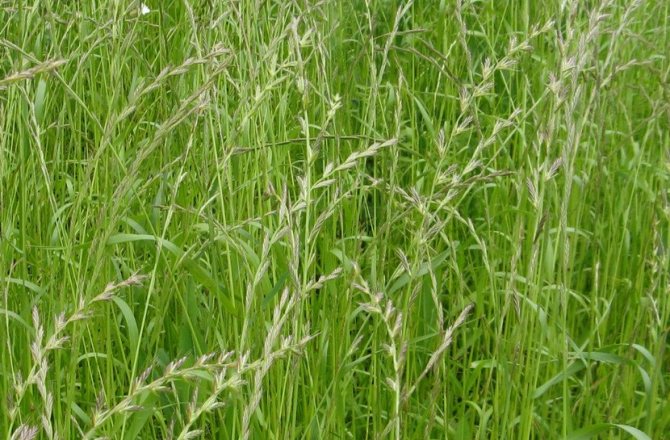

- Microclover is characterized by the presence of small leaves and the total plant height is approximately 5 cm. Microclover is considered unpretentious to care for, however, it is important to organize abundant watering. These plants are quite well adapted to all kinds of environmental influences. They easily endure various weather conditions. Microclover is an aggressive plant that has the ability to fill empty areas and inhibit weeds.


- Red fescue is especially unpretentious to the soil and its composition, and also tolerates drought and even winter frosts quite easily. It is recommended to plant it in shaded areas. Dense rhizomes are capable of forming a strong sod, while the depth of root growth can be about 20 cm, which almost completely eliminates the likelihood of the appearance of weeds.
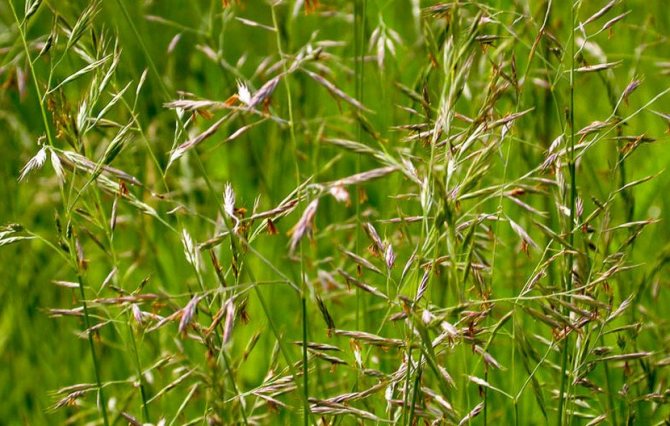

How to care for a young lawn
We take herbicides as a last resort. This rule is especially important for young grass, which is also susceptible to chemistry. And if you are just creating a lawn, then at the first stage you are ready to get a lawn from weeds: the weeds will crawl out of the soil earlier than the grass.
The fact is that the young lawn suffers from annual weeds, and simple mowing can easily cope with them, nothing else is needed.
Lawnmower Agronom, FORUMHOUSE member
Regular mowing eliminates almost all weeds, and even one-year-olds - at a time.
After about the third mow, when the grass begins to thicken, selective herbicides can be used to control perennial weeds. As a rule, there are two types of such herbicides on sale: Lontrel 300 and Lintour.
SodmasterFORUMHOUSE Consultant
Better yet, a mixture of both.
Selective herbicides kill only dicotyledonous plants.
Site preparation
Before planting grass for the lawn, you need to prepare the site. Marking is done on it, after which the roots of the weeds are removed. The procedure is repeated several times every two weeks. Then the ground needs to be leveled.
Treatment with herbicides, chemicals aimed at destroying certain plants, can help prevent the spread of weeds. It is best to use herbicides in the spring on young seedlings.
The lawn is treated with the following types of herbicides:
- Continuous action. Such preparations destroy all types of vegetation on the lawn. They are applied to the leaves of plants, which gradually dry out. The action of such substances extends both to the terrestrial part and to the root system. The most effective continuous action herbicides are Agrokiller and Tornado.
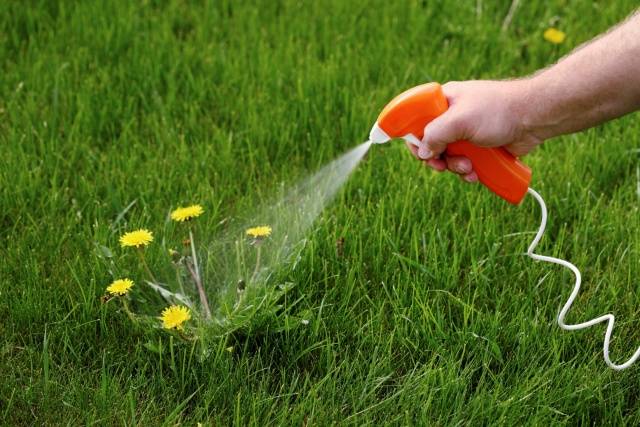

- Selective impact. These substances affect only certain types of grasses and do not harm garden crops and lawn grass.
Selective herbicides
Selective herbicides work differently than Roundup. Weeds treated with Roundup stop being green and turn yellow. From exposure to selective herbicides, they lose their shine, stop growth (often there is a "twisting effect") and dry out.
Do not allow the influence of these herbicides on cultivated flowers, vegetables, etc. - this will lead to the death of these plants. Therefore, it is better not to plant flowers in the middle of the lawn, and when treating the lawn with herbicides, observe maximum caution on your territory.
One more point: it is not recommended to mow the lawn low immediately after treatment, to mow more than two centimeters. If the mowing height was 4-6 cm before treatment, it should remain the same after treatment.
During the first application of herbicides, our experts advise to follow the instructions on the packaging to avoid concentration problems. For subsequent treatments, it is better to follow the instructions in the reference book.
SodmasterFORUMHOUSE Consultant
The actual concentrations are indicated there, and on the packaging for "dummies" - taking into account the reinsurance.
When killing weeds, it is not the amount of herbicides that is important, but their concentration.
SodmasterFORUMHOUSE Consultant
Regarding kon, it is indicated: lawn lintur 0.18 kg per hectare. This means that 180 g must be diluted in 250 liters (average consumption of working fluid per hectare). And for personal use, 1.8 g per 5 liters of water is written. That is, the concentration is reduced by half.
In no case should you get carried away with herbicides and carry out additional treatments for greater efficiency, and if you have treated the lawn, and the effect is zero, talk to specialists. You can ask a question related to weeds on the lawn, experts and participants of FORUMHOUSE.
Only use herbicides when you are confident in the need for this measure.
Where do weeds come from on the lawn?
We will include all those plants whose seeds we did not sow when we started the lawn. These are thistle, wheatgrass, dandelion, plantain - hardy wild plants that can withstand trampling, flooding, drought and other troubles much better than lawn grass.
They appear on the lawn in two ways:
- the seeds are carried by the wind from the adjacent territories or stick to the soles of shoes while you are walking somewhere, and then fall off when you walk at least along the edge of the site;
- germinate from seeds or remnants of rhizomes, which remain viable for a long time in the soil.
It is pointless to fight the wind, but the second way is completely controlled by man.
When and how to apply herbicides
There are situations in which herbicides do not affect the weeds. This happens in several cases:
- after flowering (when the seeds are already starting to set),
- in dry sunny weather,
- on cold days.
Based on this, experts consider the best periods for the use of these substances to be the end of May - beginning of June and the end of August.
To enhance the effect of herbicides, before processing them, it is necessary to prepare: the lawn must be fed and properly shed. On a well-tended lawn, herbicides act like a magic wand.
Here's an example: Clover is a weed that “hungry”, without feeding, is highly resistant to herbicides. It cannot be destroyed without top dressing, therefore the FORUMHOUSE consultant Lawnmower recommends the following algorithm to combat this weed: top dressing - watering - after two days treatment.
Clover is perfectly destroyed by preparations containing 2,4D, but there are no such preparations approved for use in private household plots on sale in most countries of the post-Soviet space. Our expert offers a blend of lintur and lontrel.
Lawnmower Agronomist, FORUMHOUSE participant
Remember, in the tank mix, the concentration should be reduced by 10-30%, so if you mix, then within the limits indicated, and pre-dissolve the lintur in a separate container.
And now, to talk about the influence of correct agricultural technology on the effectiveness of herbicides: a member of our portal Yuriych brought out clover with one herbicide (one and a half bags per 5 liters).
YuriychFORUMHOUSE Member
The third year without clover, and not only without it!
In the photos below, you can compare the same area, before and after herbicide treatment, with and without clover; but in both photographs we see a lawn that has been carefully tended.
Orhidika FORUMHOUSE Participant
Super example - how to do to have a good lawn ...
Another example - a member of our portal Just a grandfather tells about a plot on his lawn, which is not even attacked by dandelions, and where moles do not even try to dig holes. This lawn is eight years old, and the red fescue, which is being tended as follows, in this case acted as a lawn grass that destroys weeds: it has supplanted the dandelions!
It makes no sense to look for a special lawn grass that displaces weeds - with proper care and regular mowing, weeds will displace any grass.
Rhizome grasses displace dandelions, especially if they receive support in the form of mowing and feeding.
SodmasterFORUMHOUSE Consultant
In general, my standards are wild - four weeds per hundred square meters are allowed on the lawn. And nothing happens.
Regular, from the heart, feeding, thanks to which the weeds cannot withstand the competition with the lawn grass, and the mowing twice a week help to fulfill the "wild standards".
Types of lawn mixtures that kill weeds
To decorate the lawn on your site, it is recommended to use already prepared mixtures that have the ability to get rid of weeds, namely:
- "Canada green"... This seed mixture is recommended for northern areas. It includes plants that are able to survive a drop in temperatures. These include ryegrass and several types of fescue. Canada Green is popular in urban environments due to its resistance to various aggressive environmental factors.
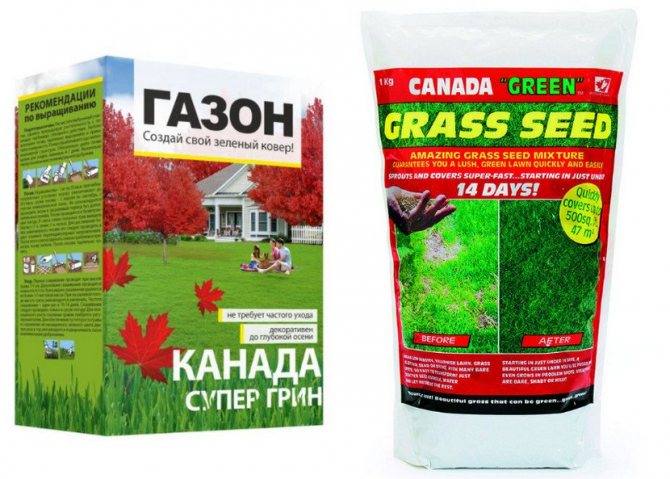

- "Ornamental"... The mixture makes it possible to plant a lawn covering that is suitable for both sunny and shaded areas. Such a lawn tolerates climate change quite well. It is unpretentious to the composition of the soil, so it quickly rises and grows.


- Sunshine. This lawn grass is preferably planted in areas with dry weather. The plants included in its composition reduce the degree of wear and tear and allow it to survive well in cold and drought.
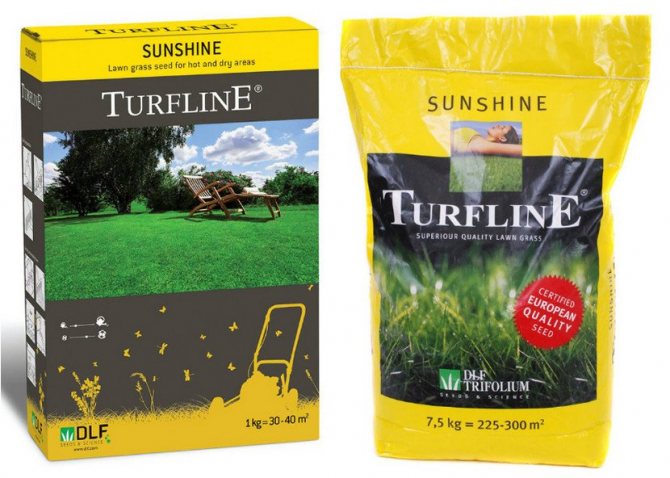

- "Gnome"... This is a fairly low cover. It includes meadow and red fescue, bluegrass. They are perfectly adapted and can be planted in a climatic zone with a harsh climate. The Gnome lawn grows slowly.
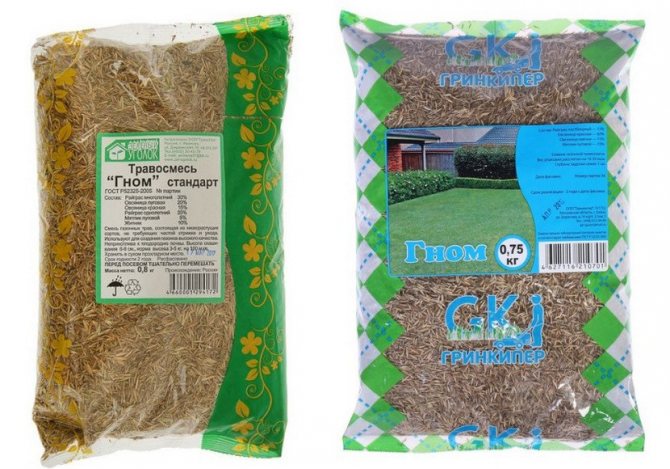

- "Lilliputian" is also a type of lawn that does not grow tall. In this mixture, plants must be watered 2 times a week and must be treated for diseases.
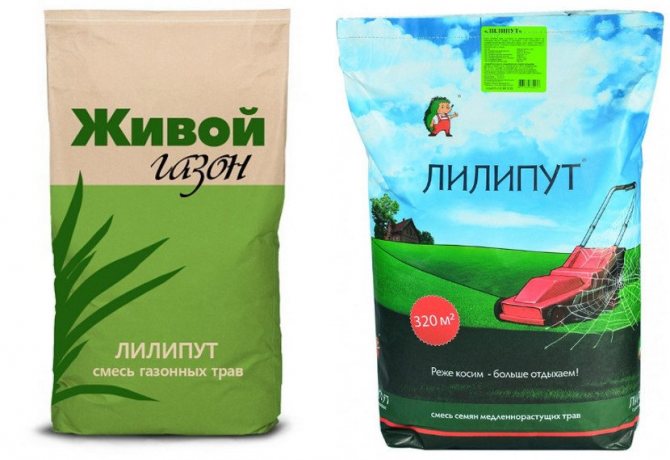

- "Cottage"... It is capable of creating a dense carpet during germination.And he tolerates loads quite well and stops overgrown weeds. Due to its slow growth, such a lawn covering is quite unpretentious in maintenance.
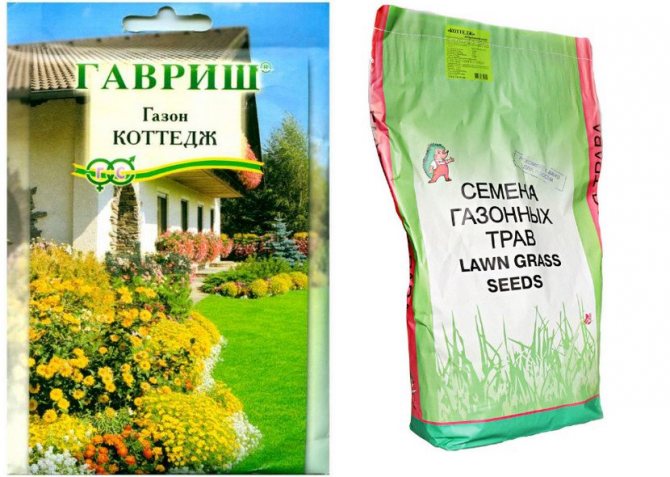

- Robustica is perfect for creating a durable coating. She is unpretentious to external influences, as well as to changes in the external environment. Seedlings are able to appear 1 week after the mixture has been placed in the ground.
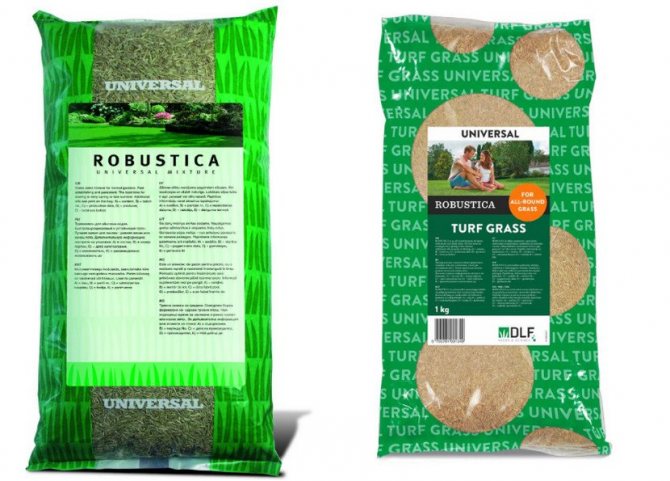

- The "summer" lawn mixture has the ability to displace weeds. It is recommended to use it for ennobling a playground, as well as landscaping a summer cottage. The coating is unpretentious for variable weather, so winter frosts are not afraid of it.
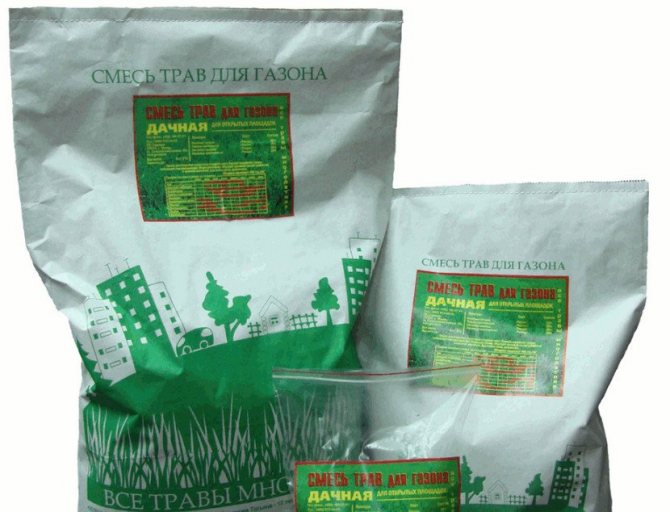

Why the herbicide didn't help
After treating the lawn with herbicide, nothing may happen at all, they will still brazenly stick out of the lawn grass. This is why this could have happened:
- you applied the treatment in unsuitable weather, drought or rainy day, wind, cold or heat;
- there are weeds that are resistant to herbicides;
- poor concentration or defective batch of herbicide;
- the weeds recovered so quickly from the dormant rhizomes that it seems that the herbicide did not work.
Each case must be dealt with individually, with the help of an agronomist.
Care
A beautiful and well-groomed lawn requires regular and timely maintenance.
We recommend that you find out what tapeworms are and the peculiarities of their use in landscape design.
In order for it to please the owner with a dense green carpet, without bald patches, a number of rules must be followed:
- Trim regularly.
- Water in a timely manner.
- Weed sometimes.
- Feed several times a season.
- Mulch in autumn.
- If the soil is compacted, pierce it.
- Overseeding if necessary.


It may seem that taking care of the beauty of the lawn takes up all your free time. In fact, this is not at all the case. The only condition is a competent approach to care and timeliness.
Watering
The best time to water is in the evening or early morning. During the day, it is impractical to do this, since the water evaporates quickly, preventing the plants from nourishing. On the contrary, during the night, moisture deeply saturates the soil and the plants are well saturated. Drip irrigation is advisable to prevent damage to the plant stems with a powerful jet of water.
Check out also the application of rutaria in landscape design.
It is impossible to calculate the irrigation rate. You need to focus on the condition of the soil. Irrigate abundantly, but avoid the formation of puddles. In the hot season, watering is worth several times a week, in the cool - once a week.
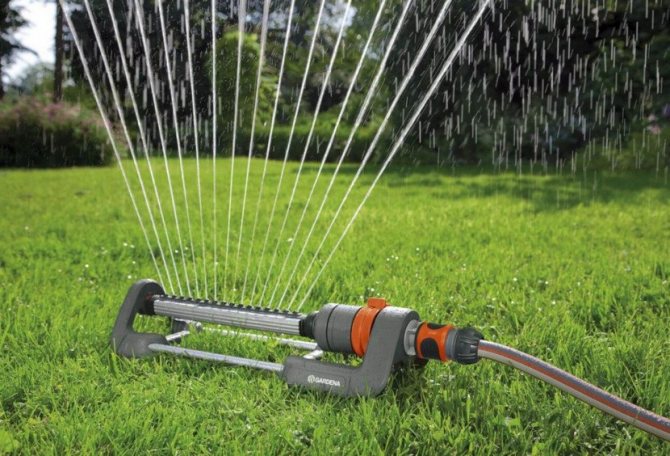

You should also think about what kind of device to irrigate the lawn.
There are several options:
- with your own hand using a spray hose. When choosing it, you need to pay attention to the number of layers, its durability depends on it;
- automatic irrigation using irrigation systems. They are unregulated circular and movable;
- underground irrigation systems. Sprayers in such systems are underground and extend directly during watering.


A haircut
In order for the lawn grass to be thick and healthy, it must be mowed regularly. But this process also has its own characteristics. The main condition for a high-quality haircut is the presence of a sharp tool, regardless of what exactly is mowing: an oblique or trimmer. A dull blade can pull out sod or damage stems.
Important! The properties and appearance of the lawn depend on the percentage of seeds. The prevalence of bluegrass makes the lawn a dark shade of green. More ryegrass can create a denser and more resistant root layer.
The mowing height will also be an important nuance. It all depends on the climatic conditions of the area. If the climate is not hot and with frequent precipitation, the grass can be left to a minimum height of a few centimeters.And if the climate is hot and arid, the height of the grass should be at least 3 cm. But too tall grass is undesirable, since it can contribute to the appearance of weeds.
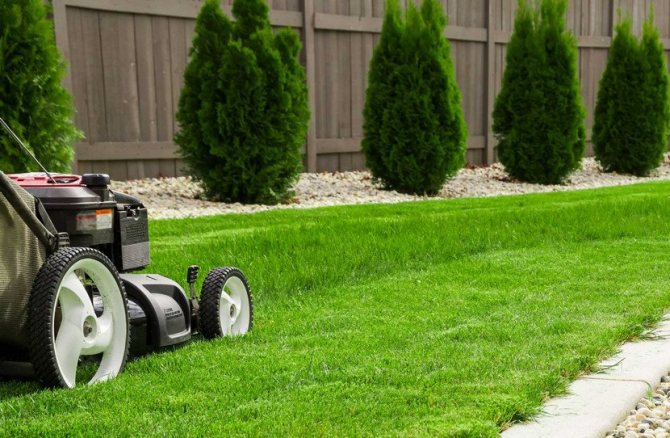

For moderate latitudes, a cutting height of about 5 cm is considered acceptable. But if hot dry days fall in such a climate, then the height during this period is left several centimeters higher. If mowing is done with a lawn mower, it is important to maintain an even pace. If it is uneven, there is a possibility that the grass on the lawn will be trimmed by waves. It is also necessary to change the mowing direction with each new haircut.
Clover lawn
The name speaks for itself. The site is sown with creeping clover. This lawn is suitable for lazy or busy people who don't have time to mow it every week. This is done once a year, right after the flowering period of the grass. No special technique is required, it is enough to get a trimmer or a scythe.


It is impossible to trample such a lawn, it is resistant to this phenomenon. Does not suffer from a lack of moisture, it can be grown on soils with an acidic reaction. Clover flowers are the object of attention of bees, the result will be the production of tasty and aromatic honey by the insects.
For a clover lawn, the soil is prepared in the same way as for a cereal lawn. 1.5-3 grams of seeds are sown per square meter of plot area. Clover is an aggressive crop and should not be allowed to move to other areas. It is necessary to mow the heads before the seeds are formed.
Reasons for the appearance of weeds
Weeds are plants that are not cultivated by people, but grow arbitrarily. Often they litter agricultural land, are found in the fields, within private land areas, where they inhabit vegetable gardens and lawns.
- Weeds can be caused by improper lawn care, in particular:
- lack of nutrients, which leads to a weakening of the grass cover and the appearance of weeds;
- placement of the site in a darkened place;
- excess moisture in the soil cover - such an environment is preferred by mosses and other weeds;
- excessively short mowing of grass.
Important! A common cause of weeds is the presence of their seeds in imported soil. They can stay in the ground for many years and germinate under favorable conditions.
Weed grass brings significant harm, first of all, because its powerful root system absorbs a huge amount of water, significantly reducing soil moisture. Also, some weeds "stick" to the roots and stems of cultivated species and literally extract water and biological substances from them, which often leads to the death of the latter.


Many weeds grow very strongly, obscuring the surrounding "necessary" plants, darken the crops, lower the soil temperature.
In addition, they become a breeding ground for harmful microorganisms and insect pests, and such a neighborhood will not bring anything good to cultural species. And, of course, it should be noted that weeds significantly spoil the aesthetic appeal of the lawn, when horsetail or wheatgrass shoots randomly rise against the background of neat green grass.
- Having considered how much harm weeds can do, it is fair to say that, growing in moderation, they can also bring benefits, namely:
- many weeds are good honey plants;
- provide favorable conditions for useful representatives of the entomofauna, becoming a source of food for them;
- some species are able to signal changes in the soil. For example, if plantain or field horsetail began to grow actively, it means that the acidity in the soil has increased, which needs to be neutralized.
- The appearance of weeds blooming in autumn will indicate a lack of humus in the soil, its poor fertility;
- cut off before the seeds appear, weeds are an excellent ecological fertilizer - they are added to compost, used for mulching;
- many species can be infused and used as foliar feeding;
- some weeds have excellent medicinal properties (horsetail, plantain, buttercup, etc.), which is why they are used in folk medicine.
Also learn how to deal with fungal diseases of the lawn.
Ordinary lawn
This is the most common type. Sowed with a stable mixture of "Sport and Play", which is not threatened with trampling. It includes special varieties of grasses capable of forming dense turf. Such a mixture is suitable for playgrounds and sports grounds; it is sown around the barbecue area. There are many special mixtures that are used for sowing shaded areas, such as "Shady Garden". If you use a mixture called "Lilliputian" for sowing, you can cut the lawn by three times. For a versatile area without active walking on it, a universal mixture is ideal.

